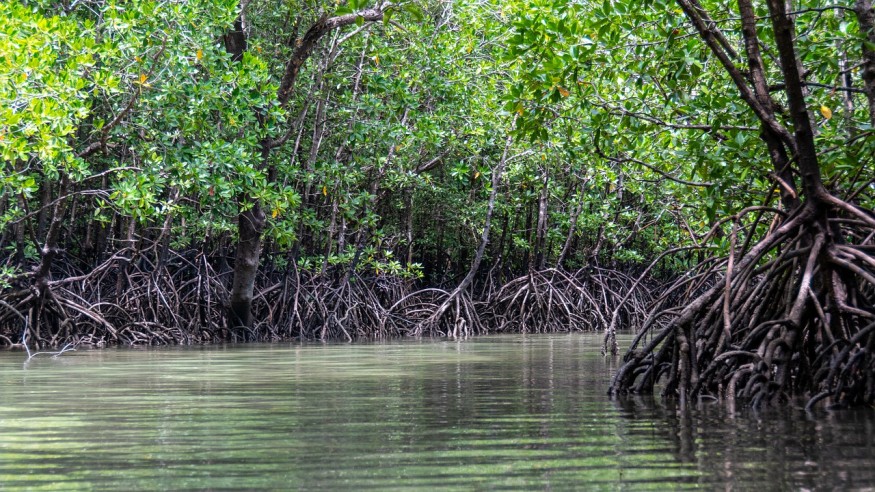Utilizing "blue carbon" ecosystems might result in "uncertain and inconsistent" carbon removal.
According to a recent study, restoring coastal vegetation--so-called "blue carbon" habitats--might not be the natural climate answer it is supposed to be.

Researchers from the University of East Anglia (UEA), the French Center National de la Recherche Scientifique (CNRS), and the Prince Albert II of Monaco Foundation's OACIS initiative cast doubt on the commonly held belief that restoring habitats like mangroves, saltmarshes, and seagrass can remove significant amounts of carbon dioxide (CO2) from the atmosphere, as cited by Phys.org.
Seven Factors
The results of their analysis, which was released in the journal Frontiers in Climate, included seven factors that make carbon accounting for coastal ecosystems dangerous and challenging.
These are significant variability in carbon burial rates, sensitivity to future climate change, and methane and nitrous oxide flow.
The authors cautioned that further measures can lessen these hazards, but would result in much higher expenditures after looking at data on restoration costs.
However, they emphasized that despite their advantages for biodiversity preservation, climate adaptation, coastal protection, and food security, blue carbon ecosystems should still be preserved and restored whenever practical.
The expected climate benefits from blue carbon ecosystem restoration may be realized. Still, it seems more likely that they will fall far short, according to lead author Dr. Phil Williamson, honorary reader in UEA's School of Environmental Sciences.
"We have looked into the processes involved in carbon removal, and there are just too many uncertainties," he said.
He further noted that such areas were mostly built for tourism, coastal habitation, and port development, making restoration restricted.
"However, we think that all efforts should be taken to stop and, if feasible, reverse the loss of coastal vegetation globally. Blue carbon ecosystems do more than just store carbon; they also guard against storms, sustain biodiversity and fisheries, and enhance water quality."
Rich in organic carbon gathered and stored over hundreds of years are the sediments that lie under mangrove forests, tidal saltmarshes, and seagrass meadows.
The potential for these coastal blue carbon ecosystems to contribute to a natural climate solution has been identified favorably in numerous recent studies and reviews in two ways: through conservation, which lowers greenhouse gas emissions resulting from the loss and degradation of such habitats; and through restoration, which increases carbon dioxide drawdown and its long-term storage.
Evaluating the Performance So Far

In evaluating the viability of attaining measurable and secure carbon removal (negative emissions) by restoring coastal vegetation, this new assessment concentrates on the latter.
Assuming accurate knowledge of the amount of CO2 they will remove from the atmosphere in the future, more companies and states have committed to reducing their emissions through the restoration of these ecosystems by purchasing carbon credits.
According to Dr. Williamson and co-author Professor Jean-Pierre Gattuso of CNRS and the OACIS project of the Prince Albert II of Monaco Foundation, the policy issue is more nuanced.
That is when only taken into account as a climate mitigation measure, such as for carbon offsetting or for inclusion in countries' Nationally Determined Contributions, which outline their efforts to reduce emissions and adapt to the effects of climate change under the Paris Agreement, CO2 removal using coastal blue carbon restoration has questionable cost-effectiveness.
"If we use these ecosystems for carbon offsets in a major way, expecting that they would remove up to, say, 100 gigatons of carbon dioxide over the period 2025-2100, but find that they only remove ten or maybe just one gigaton of CO2," Dr. Williamson noted.
Where coastal blue ecosystem restoration projects are carried out primarily for carbon removal, they need to include comprehensive long-term monitoring to verify that the intended climate benefits are being achieved.
Restoration should therefore be carried out in addition to-not as a substitute for-near-total emission reductions.
Future Challenges
According to Prof. Gattuso, "Many significant difficulties about the measurement of carbon fluxes and storage remain unresolved, influencing certification and leading to over-crediting."
Therefore, this action can be socially justified in many situations, based on the multiple benefits such habitats provide at the local level.
However, restoring coastal blue carbon ecosystems is highly advantageous for climate adaptation, coastal protection, food provision, and biodiversity conservation.
For similar news, don't forget to follow Nature World News!
© 2025 NatureWorldNews.com All rights reserved. Do not reproduce without permission.





